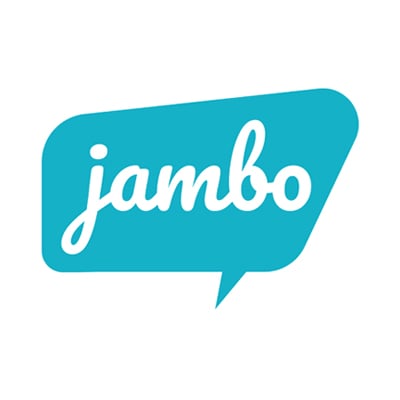
Projekte für erneuerbare Energien sind entscheidend für die Verringerung unseres CO2-Fußabdrucks auf dem Weg in eine nachhaltige Zukunft. Allerdings stoßen diese Initiativen oft auf erhebliche Hürden.
Ein entscheidender Faktor bei der Bewältigung dieser Herausforderungen ist die Pflege enger Beziehungen zu Ihren Stakeholdern, d. h. zu Einzelpersonen oder Gruppen, die direkt vom Erfolg des Projekts betroffen oder daran interessiert sind, wie z. B. lokale Gemeinden, Unternehmen, Landbesitzer, Regierungsbehörden, Investoren und Umweltorganisationen.
Klare Kommunikation und festgelegte Erwartungen können viel dazu beitragen, Probleme zu vermeiden und gute Beziehungen zu den Stakeholdern zu pflegen. Teams für erneuerbare Energien können diesen Prozess mit einer Stakeholder Relationship Management (SRM)-Software wie Jambo optimieren.
Dieser Artikel befasst sich mit den Strategien zur wirksamen Entschärfung von Bedenken der Interessengruppen und zur Förderung positiver Beziehungen.
Engagement der Interessengruppen und Erwartungsmanagement
Identifizierung und Einbeziehung von Stakeholdern
Zunächst ist es wichtig, alle wichtigen Interessengruppen zu ermitteln und sie frühzeitig in den Prozess einzubinden. Wenn wichtige Interessengruppen nicht berücksichtigt werden, kann dies zu Verzögerungen oder Widerständen führen und dem Projekt schaden. Eine Übersicht über Ihre Interessengruppen stellt sicher, dass keine kritischen Stimmen übersehen werden.
Projekte für erneuerbare Energien können ein Gefühl der Eigenverantwortung und der Zusammenarbeit fördern, indem sie mit den identifizierten Interessengruppen zusammenarbeiten. So ist es zum Beispiel wichtig, lokale Gemeindevorsteher einzubeziehen, die die besonderen Bedürfnisse und Anliegen ihrer Nachbarschaft kennen, indigene Gemeinschaften oder Stammesnationen, deren traditionelles Land von der Projektentwicklung betroffen sein könnte, sowie Regierungsbeamte, die eine entscheidende Rolle bei der behördlichen Genehmigung und Aufsicht spielen.
Regelmäßige Rückmeldungen und Aktualisierungen tragen dazu bei, Vertrauen aufzubauen und alle Beteiligten auf dem Laufenden zu halten. Auf diese Weise können Projekte proaktiv auf Bedenken und Missverständnisse eingehen, Fortschritte und Meilensteine transparent mitteilen und die Zusammenarbeit und das Feedback während des gesamten Projektzyklus fördern.
Erwartungsmanagement und Engagement
Der Umgang mit Erwartungen ist ebenso wichtig für den Aufbau enger Beziehungen zu Ihren Stakeholdern. Das Vertrauen der Beteiligten kann schnell schwinden, wenn sie unrealistische Erwartungen haben oder wenn Versprechen nicht eingehalten werden. Um dies zu verhindern, ist eine klare Kommunikation über die Projektziele, den Zeitplan und die zu erbringenden Leistungen unerlässlich. Dies trägt dazu bei, die Erwartungen aller Beteiligten mit den tatsächlichen Gegebenheiten des Projekts in Einklang zu bringen, und stellt sicher, dass alle Parteien auf derselben Seite stehen.
Wenn Sie sich beispielsweise verpflichten, Arbeitsplätze für die örtliche Gemeinschaft zu schaffen, ist es wichtig, dieses Versprechen auch einzuhalten, um Enttäuschungen und Rückschläge zu vermeiden. Wenn Sie realistische Erwartungen setzen und Ihre Zusagen konsequent einhalten, können Sie das Vertrauen Ihrer Stakeholder gewinnen und deren Unterstützung während des gesamten Projektzyklus erhalten.
Pro-Tipp für den Umgang mit den Erwartungen der Stakeholder: Jeder hat Erwartungen an Sie, und Sie können diese nur erfüllen, wenn Sie sie fragen, was sie erwarten, oder selbst Erwartungen setzen. Sie setzen Erwartungen, wenn Sie Versprechungen machen oder wichtige Projektdetails mitteilen. Verfolgen Sie diese Versprechen und Mitteilungen mit Stakeholder-Beziehungsmanagement (SRM) Software nachverfolgen, um sicherzustellen, dass alle Teammitglieder die eingegangenen Verpflichtungen verstehen und in ihrer Kommunikation konsistent bleiben können.
Ausfall der Kommunikation
Effektive Kommunikation ist entscheidend, um Missverständnisse und Pannen zu vermeiden. Wenn die Kanäle ineffektiv sind oder die Beteiligten sich nicht gehört fühlen, kann schnell Misstrauen aufkommen. Um dies zu vermeiden, ist es wichtig, ein Umfeld zu schaffen, in dem alle Stimmen gehört und wertgeschätzt werden. Dies lässt sich erreichen, indem Sie die wichtigsten Diskussionen bei Stakeholder-Treffen nachverfolgen. So können Sie sich an wichtige Gespräche erinnern und sind für künftige Interaktionen gerüstet.
Die Verwendung eines zentralen Ortes wie Jambo für die Protokollierung aller Projektinformationen bietet Ihrem Team eine einzige Quelle der Wahrheit, die sicherstellt, dass jeder auf die gleichen aktuellen Details zugreifen kann. Dies hilft, Verwirrung zu vermeiden, stärkt die Beziehungen und fördert den Zusammenhalt im Team, was letztendlich zu besseren Ergebnissen für die Beteiligten führt.
Ökologische und soziale Auswirkungen
Die Berücksichtigung ökologischer und sozialer Auswirkungen ist von größter Wichtigkeit, da diese Themen oft die Bedenken Ihrer Interessengruppen dominieren. Wie jede Entwicklung können auch Projekte für erneuerbare Energien weitreichende Auswirkungen auf die Tier- und Pflanzenwelt, lokale Gemeinschaften und Landschaften haben.
Das Ivanpah Solar Electric Generating System in Kalifornien zum Beispiel hatte erhebliche Probleme mit den Auswirkungen auf die Wüstenschildkrötenpopulation. Daraufhin wurde das Projekt verkleinert, um eine Beeinträchtigung der Lebensräume der Schildkröten zu vermeiden, und es wurden fortlaufende Strategien eingeführt, um das durch die Solartürme verursachte Vogel- und Fledermaussterben zu verringern.
Eine wirksame Kommunikation mit den Interessengruppen war entscheidend, um diese Umweltbedenken auszuräumen und die Unterstützung für das Projekt aufrechtzuerhalten, was letztlich die erfolgreiche Entwicklung des Projekts sicherte.
Einhaltung von Vorschriften und Anpassung der Politik
Regulatorische und politische Herausforderungen
Das Navigieren in der komplexen Regulierungslandschaft ist eine große Hürde für Projekte im Bereich der erneuerbaren Energien, da häufige politische Änderungen und neue und komplexe Vorschriften eine wachsame Einhaltung und Anpassungsfähigkeit erfordern.
In den Vereinigten Staaten müssen Energieerzeuger zahlreiche Vorschriften einhalten, darunter den Clean Air Act, den National Environmental Policy Act (NEPA) und die bundesstaatlichen Standards für erneuerbare Energien (Renewable Portfolio Standards - RPS). Um rechtliche Probleme zu vermeiden und eine reibungslose Projektdurchführung zu gewährleisten, ist es entscheidend, mit diesen Anforderungen Schritt zu halten.
Ein SRM-Tool kann dabei helfen, indem es Aktualisierungen von Vorschriften und Aufgaben zur Einhaltung von Vorschriften verfolgt und so rechtliche Risiken minimiert und das Projekt im Zeitplan hält.
Projekttransparenz und Berichterstattung
Transparenz ist unerlässlich, um Vertrauen bei Ihren Stakeholdern aufzubauen und die Erwartungen der Regulierungsbehörden zu erfüllen. Unzureichende Transparenz kann zu Misstrauen und einer möglichen Überprüfung durch die Aufsichtsbehörden führen.
In der Europäischen Union beispielsweise verlangt die Richtlinie über die Nachhaltigkeitsberichterstattung von Unternehmen (CSRD) von vielen Unternehmen einen strengeren Ansatz bei der Nachhaltigkeitsberichterstattung. Es ist wichtig zu verstehen, wie sich diese Vorschriften auf Ihr Unternehmen auswirken können, damit Sie einen strategischen Ansatz für das Stakeholder-Engagement planen können.
Regelmäßige Berichte über den Projektfortschritt und die Herausforderungen sind wichtig, um das Vertrauen der Beteiligten zu erhalten. Diese Berichte sollten Daten zu den Projektmeilensteinen, den Ergebnissen der Umweltüberwachung und der finanziellen Leistung enthalten.
Ein SRM-Tool kann diesen Prozess vereinfachen, indem es Ihnen ermöglicht, klare und häufige Berichte zu erstellen, die alle Beteiligten auf dem Laufenden halten und so das Vertrauen und die Transparenz während des gesamten Projektlebenszyklus fördern.
Finanzielle und technische Durchführbarkeit
Für den Erfolg eines Projekts ist es entscheidend, dass es finanziell gesund und technisch machbar ist. Budgetüberschreitungen, Finanzierungsengpässe und Bedenken hinsichtlich der wirtschaftlichen Tragfähigkeit können das gesamte Projekt gefährden.
Das Cape-Wind-Projekt in Massachusetts, USA, ist ein Beispiel für ein Projekt, das mit finanziellen Problemen zu kämpfen hatte, die seine endgültige Absage erheblich beeinflussten. Obwohl das Projekt die rechtlichen Hürden überwand, scheiterte es an Finanzierungsproblemen. Ein detailliertes Finanzmanagement und eine transparente Kommunikation über den wirtschaftlichen Status des Projekts tragen dazu bei, die Budgets effektiv zu verwalten und die Beteiligten hinsichtlich der finanziellen Gesundheit des Projekts zu beruhigen. Wenn beispielsweise klar dargelegt wird, wie ein Projekt Einnahmen generieren oder Kosten einsparen wird, kann dies dazu beitragen, das Vertrauen der Investoren zu gewinnen und die erforderliche Finanzierung zu sichern.
Auch die Steuerung des Projektumfangs ist von entscheidender Bedeutung. Wenn das Projekt über seine ursprünglichen Pläne hinausgeht, kann dies zu Verzögerungen und höheren Kosten führen. Dieses Phänomen, das als "Scope Creep" (schleichende Ausweitung des Projektumfangs) bezeichnet wird, lässt sich durch eine detaillierte Projektplanung und eine klare Kommunikation über alle Änderungen kontrollieren. Wenn Sie sicherstellen, dass Ihre Interessengruppen die Anpassungen verstehen und ihnen zustimmen, können Sie den Projektfokus aufrechterhalten und unerwartete Abweichungen verhindern.
Proaktive Minderungsstrategien für Projekte im Bereich der erneuerbaren Energien
Die Entschärfung von Bedenken bei Projekten im Bereich der erneuerbaren Energien erfordert einen proaktiven Ansatz, der ein effektives Engagement der Interessengruppen, eine klare Kommunikation und ein transparentes Erwartungsmanagement beinhaltet.
Teams für erneuerbare Energien können Vertrauen aufbauen und die Unterstützung während des gesamten Projektlebenszyklus aufrechterhalten, indem sie die wichtigsten Interessengruppen frühzeitig ermitteln und einbinden, die Erwartungen durch regelmäßige Aktualisierungen und Fortschrittsberichte steuern und sich mit den ökologischen und sozialen Auswirkungen befassen.
Mit der Stakeholder Relationship Management (SRM)-Software von Jambo können Teams ihre Stakeholder-Engagement-Prozesse problemlos rationalisieren, wichtige Kennzahlen verfolgen und über ihre Fortschritte berichten. Sind Sie daran interessiert, mehr zu erfahren? Vereinbaren Sie noch heute einen 15-minütigen Termin mit unserem Team, um Ihre Anforderungen zu besprechen und zu erfahren, wie Jambo Ihr Unternehmen unterstützen kann.






